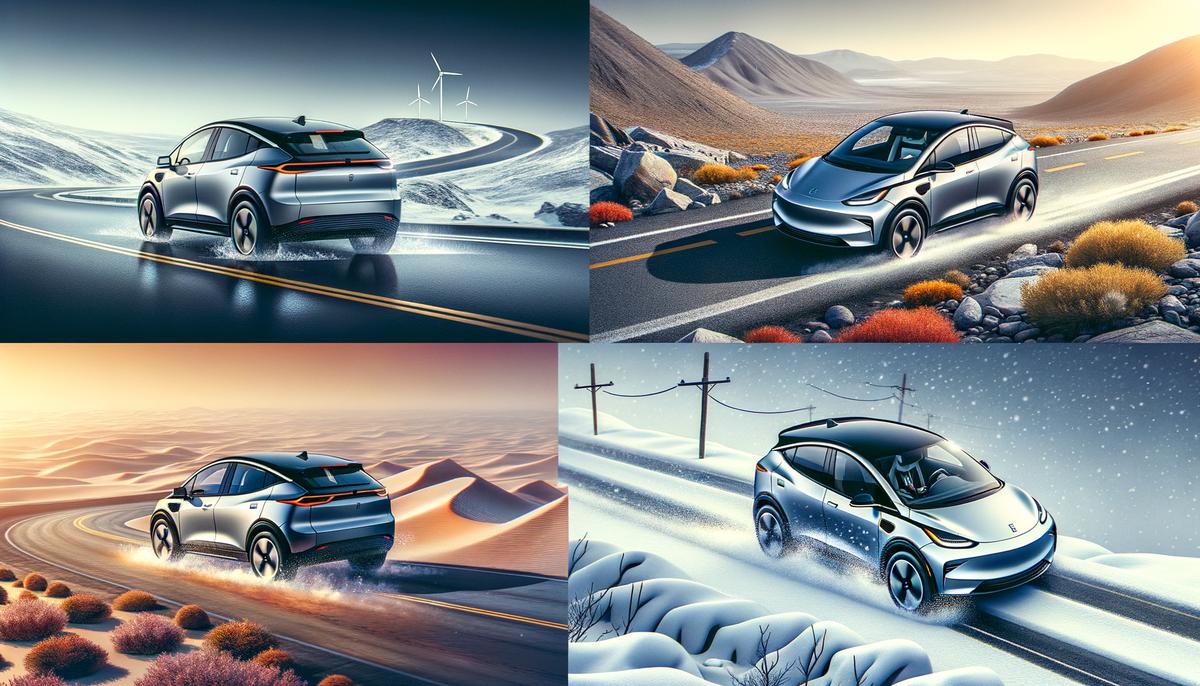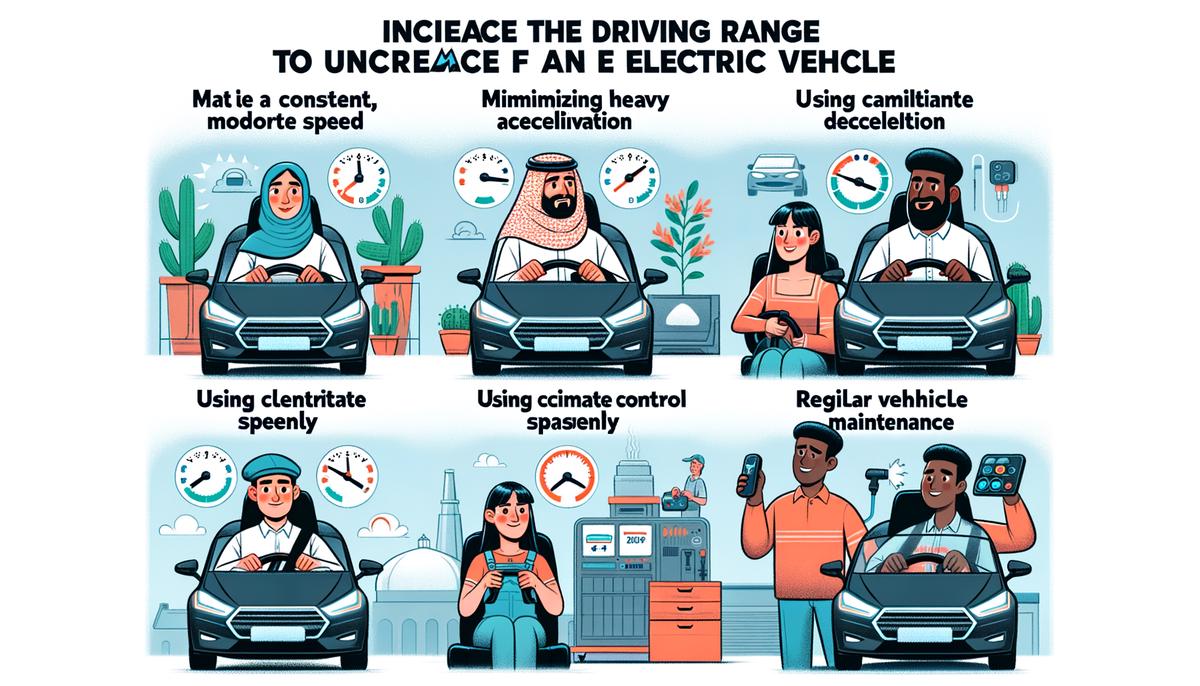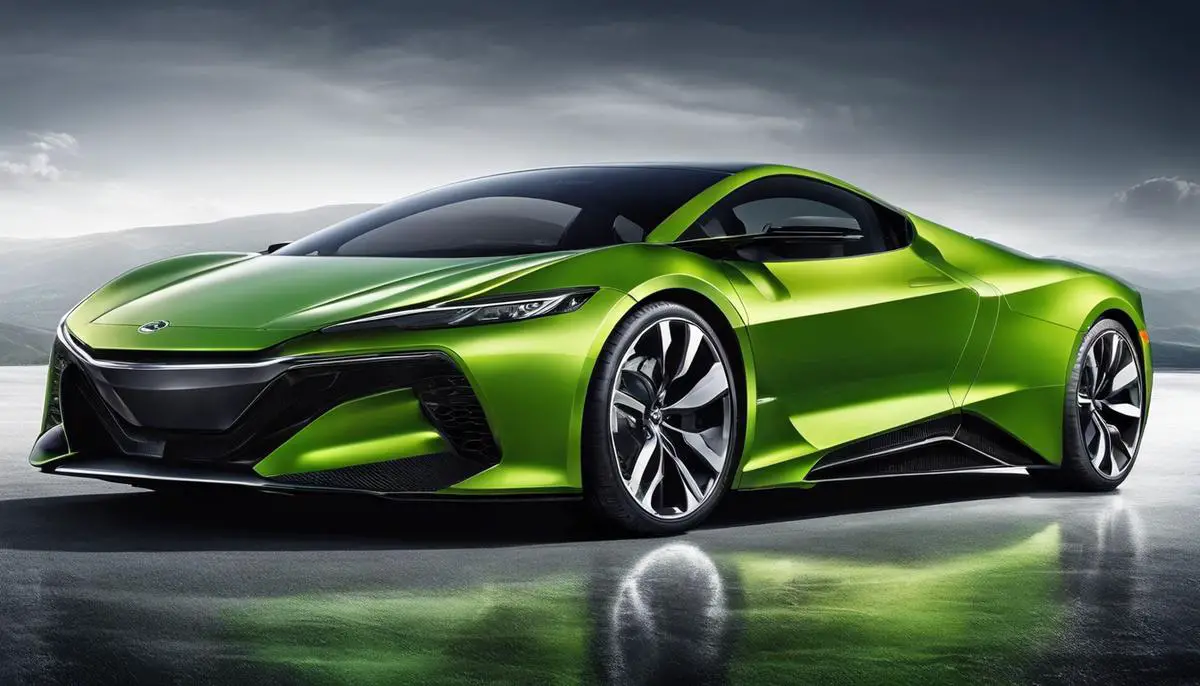Electric vehicles (EVs) are changing the way we think about driving, and at the heart of this transformation are their batteries. Understanding what affects an EV’s battery life and driving range is key to making the most out of these innovative vehicles. This article explores the essential factors that impact the efficiency and longevity of EV batteries, offering insights into how to maximize their performance in everyday driving scenarios.
Understanding Electric Vehicle (EV) Battery Basics
Electric Vehicle (EV) batteries are the powerhouse behind the growing adoption of electric cars. As these batteries determine both the range and the overall lifespan of an EV, understanding the factors that influence their efficiency and longevity is crucial. In this exploration, we dissect the pivotal elements that play a role in the performance of EV batteries.
Temperature is a significant factor that affects EV batteries. Just like extreme weather conditions can affect a traditional car’s battery, EV batteries also prefer a moderate temperature to operate efficiently. High temperatures can lead to faster degradation of the battery, reducing its overall lifespan. On the other hand, cold temperatures can temporarily decrease the battery’s ability to provide power, impacting the car’s range and performance.
The manner in which the battery is charged also plays a critical role in its longevity. Fast charging, while convenient, can stress the battery, leading to a reduction in its life over time. Regular use of fast-charging can contribute to quicker degradation of the battery’s health. Conversely, slow and steady charging at home overnight is gentler on the battery, potentially extending its lifespan.
Usage patterns significantly influence EV battery longevity. Frequent, intense acceleration and driving at high speeds can drain the battery faster and may contribute to its quicker wear over time. Adopting a more moderate driving style can conserve battery power and, consequently, enhance its life.
The battery’s depth of discharge (DoD) is another crucial aspect. Continuously draining the battery to a very low level before recharging can hasten the degradation process. It’s generally better for the battery’s health to maintain a charge between 20% and 80%, rather than charging it fully to 100% or letting it drain completely.
Battery technology and its chemistry are inherently linked to its efficiency and longevity. Innovations in battery technology are constantly improving the density, and consequently, the range and lifespan of EV batteries. Lithium-ion batteries, the most common type in use today, have seen significant advancements in terms of their efficiency and durability.
Manufacturing quality and brand may also impact the lifespan of EV batteries. High-quality batteries produced by reputable manufacturers tend to have a longer life due to better build quality and materials used. The warranty offered by the manufacturer can be a good indicator of the battery’s expected lifespan.
In summary, several factors from environmental conditions to charging habits and driving behavior heavily impact the efficiency and longevity of EV batteries. As technology advances, ongoing improvements in battery chemistry and manufacturing processes hold the promise of longer-lasting, more efficient batteries. This progress is essential in driving forward the adoption of EVs, making them more appealing and practical for wider audiences.

Real-World EV Range Versus Manufacturer Claims
When considering electric vehicles (EVs), understanding the expected range versus the actual range is crucial for drivers. The Environmental Protection Agency (EPA) and manufacturers provide estimates, but these are often ideal figures that don’t always match up with real-world driving conditions. Several factors can influence the discrepancy between the advertised and the actual range of an EV.
Driving style plays a significant role in how far an EV can travel on a single charge. Aggressive acceleration and high speeds consume more power, reducing the vehicle’s range. In contrast, gentle acceleration and maintaining moderate speeds can help extend the driving distance. This variation arises because electric motors consume more energy to provide the instantaneous power required for quick acceleration, whereas maintaining a steady speed allows the system to operate more efficiently.
The terrain is another critical factor affecting EV range. Driving uphill requires more energy, which can substantially decrease an EV’s range. Conversely, on flat or downhill terrains, EVs can achieve or even surpass their estimated ranges due to reduced energy requirements and regenerative braking capabilities. Regenerative braking captures the vehicle’s kinetic energy during braking and converts it back into electrical energy, which recharges the battery. This feature is particularly beneficial in urban settings with frequent stops and starts, allowing EVs to extend their range in city driving conditions compared to highway driving where such opportunities for energy recuperation are less frequent.
Climate control usage within the vehicle also impacts the range. Utilizing the heater or air conditioning draws power from the battery, reducing the overall distance an EV can travel. In extreme weather conditions, whether hot or cold, the effect is more pronounced. Heating the cabin in winter can significantly reduce the vehicle’s range because electric heaters consume a considerable amount of power. Similarly, in hot climates, using air conditioning to cool the cabin can drain the battery faster, diminishing the driving range.
Lastly, the load carried by the vehicle influences its range. Heavier loads increase the energy required to move the vehicle, thereby reducing the distance it can travel on a single charge. This is because the electric motor needs to work harder to overcome the increased resistance from the additional weight.
In summary, while EPA estimates and manufacturer claims provide a baseline for EV range expectations, actual range can vary significantly due to driving habits, terrain, climate control usage, and the load carried by the vehicle. Understanding these factors can help EV owners optimize their driving practices to maximize the distance their electric vehicle can travel on a single charge.

Maximizing EV Range: Effective Strategies
Optimizing Your EV’s Range: Practical Strategies Beyond the Basics
As electric vehicles (EVs) gain traction in today’s automotive market, understanding how to maximize their driving range becomes increasingly vital for owners. While the initial part of this article covered various factors like temperature effects, charging practices, and driving habits, we delve further into less discussed but equally important strategies to ensure you squeeze every possible mile from your EV.
Tire Selection and Maintenance
The right set of tires plays a crucial role in extending your EV’s range. Low rolling resistance tires are engineered to reduce the energy wasted as heat during driving, directly contributing to a higher driving range. However, the benefits of these tires extend beyond just their design. Proper tire maintenance — regularly checking air pressure, ensuring they’re properly inflated, and routine rotation — minimizes resistance further and boosts efficiency.
Aerodynamics and External Attachments
Aerodynamics significantly impacts an EV’s efficiency. The smoother the airflow over your vehicle, the less energy it requires to move forward. It’s crucial to be mindful of external attachments like roof racks, bike racks, or carriers, as these can create drag, reducing your EV’s range. When not in use, removing these accessories can help regain some of that lost range by improving aerodynamics.
Preconditioning While Plugged In
Preconditioning your EV while it’s still plugged in can have considerable benefits for range, especially in extreme weather conditions. By heating or cooling the cabin and battery to optimal temperatures before departure, you eliminate the need to use the battery’s power for climate control during the first part of your trip. This practice ensures that more energy is reserved for driving, thus extending your range.
Minimize Unnecessary Weight
Every additional pound your EV carries requires more energy to move. While it’s easy to overlook, regularly cleaning out your car and removing unnecessary items can reduce weight and aid in efficiency. This is particularly true for heavy items that you might keep in your trunk or back seat ‘just in case.’ Keep your EV lean for optimal performance.
Use Economy Modes and Smart Driving
Most EVs come equipped with driving modes designed to maximize range. Economy or eco modes adjust the vehicle’s power output and regenerative braking settings to enhance mileage. Complementing this with smart driving habits — such as gentle acceleration, avoiding high speeds, and making the most of regenerative braking — can make a substantial difference in your EV’s range.
Plan Your Route Smartly
Finally, the route you take can impact your EV’s range. Utilizing your vehicle’s navigation system or a smartphone app to plan routes that avoid steep inclines where possible, and maximize the use of highways where regenerative braking can be effectively utilized, can help in conserving energy. Furthermore, considering traffic conditions to avoid stop-and-go driving helps maintain a constant speed, enhancing overall range efficiency.
Keeping Your EV’s Software Updated
Regularly updating your EV’s software ensures you have the latest energy management algorithms and efficiency improvements. Manufacturers often release updates that enhance battery management systems for optimized performance. Staying current with these updates can subtly enhance your EV’s driving range.
In conclusion, while temperature, charging speed, and driving style are foundational to maximizing your EV’s range, diving deeper into less considered factors such as tire management, vehicle aerodynamics, and smart routing can further extend your mileage. Each strategy might contribute a small piece to the puzzle, but together, they create a holistic approach to maximizing your electric vehicle’s driving range, ensuring you can drive farther, for longer, and with greater efficiency.

Maximizing your EV’s driving range involves more than just mindful driving and regular charging. It’s about paying attention to the small but significant aspects like tire maintenance, aerodynamics, and route planning. These strategies, when applied collectively, can significantly enhance the efficiency of your EV, allowing you to enjoy longer drives with less worry about the next charge. Embracing these practices ensures that your electric vehicle not only meets but exceeds your expectations, offering a glimpse into the future of sustainable driving.



